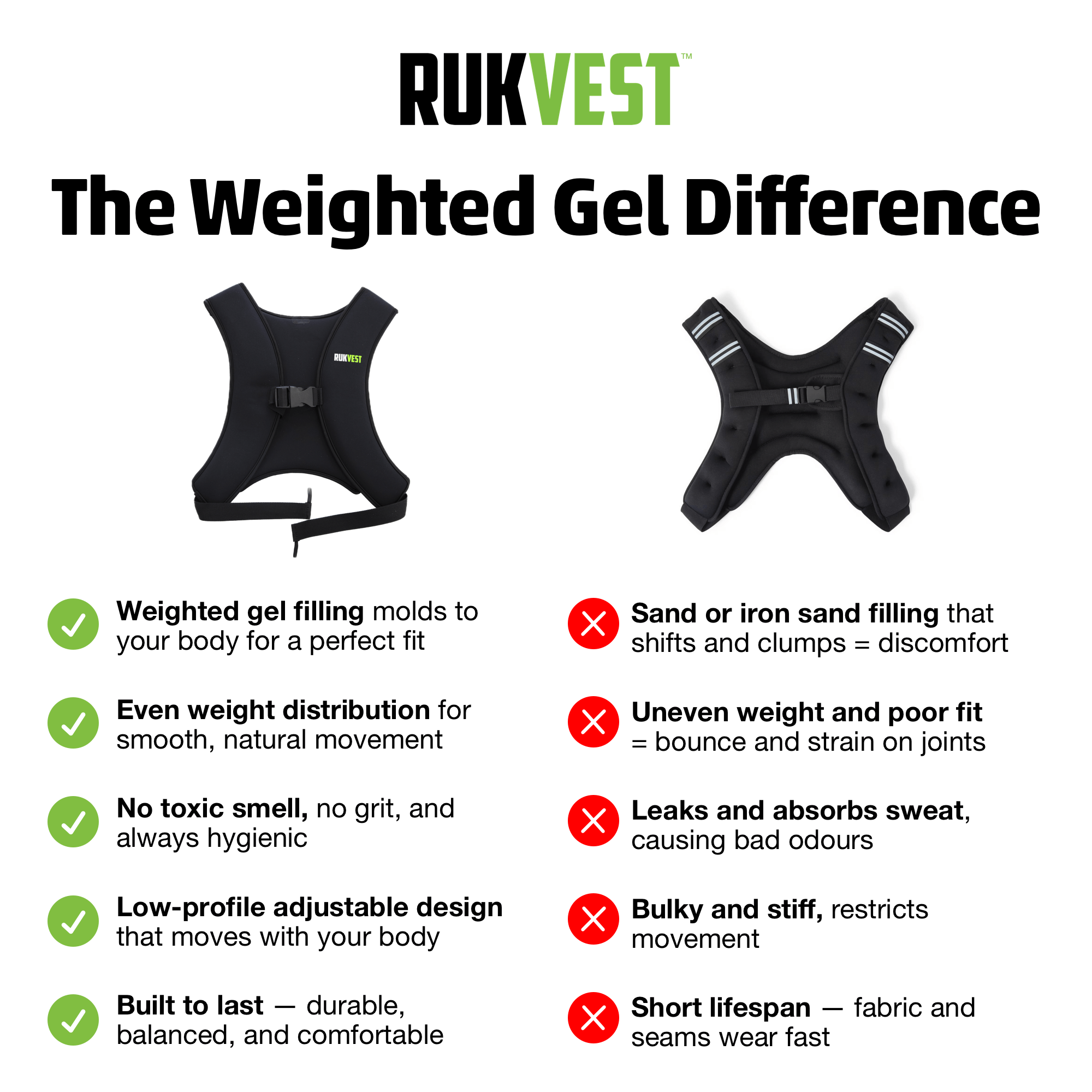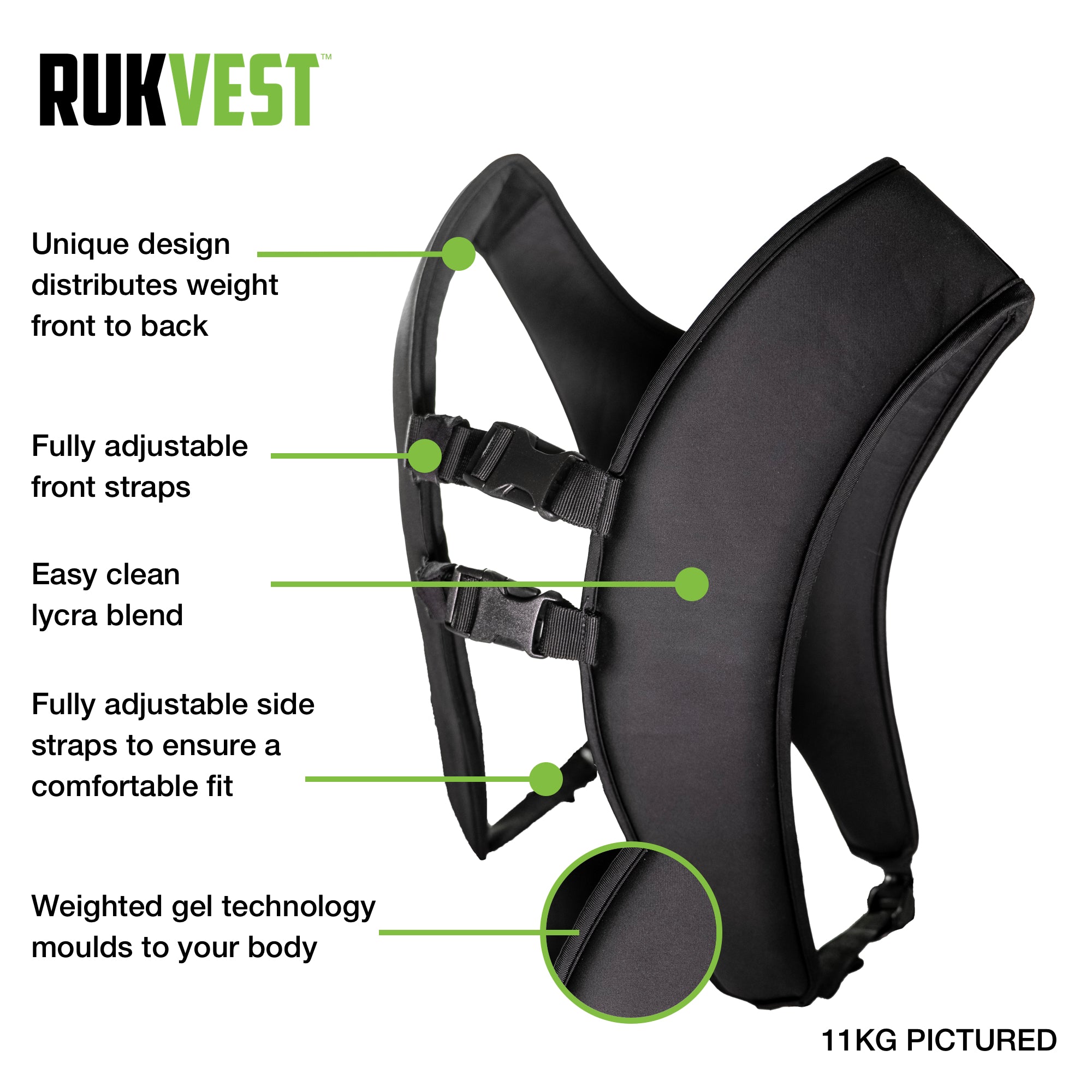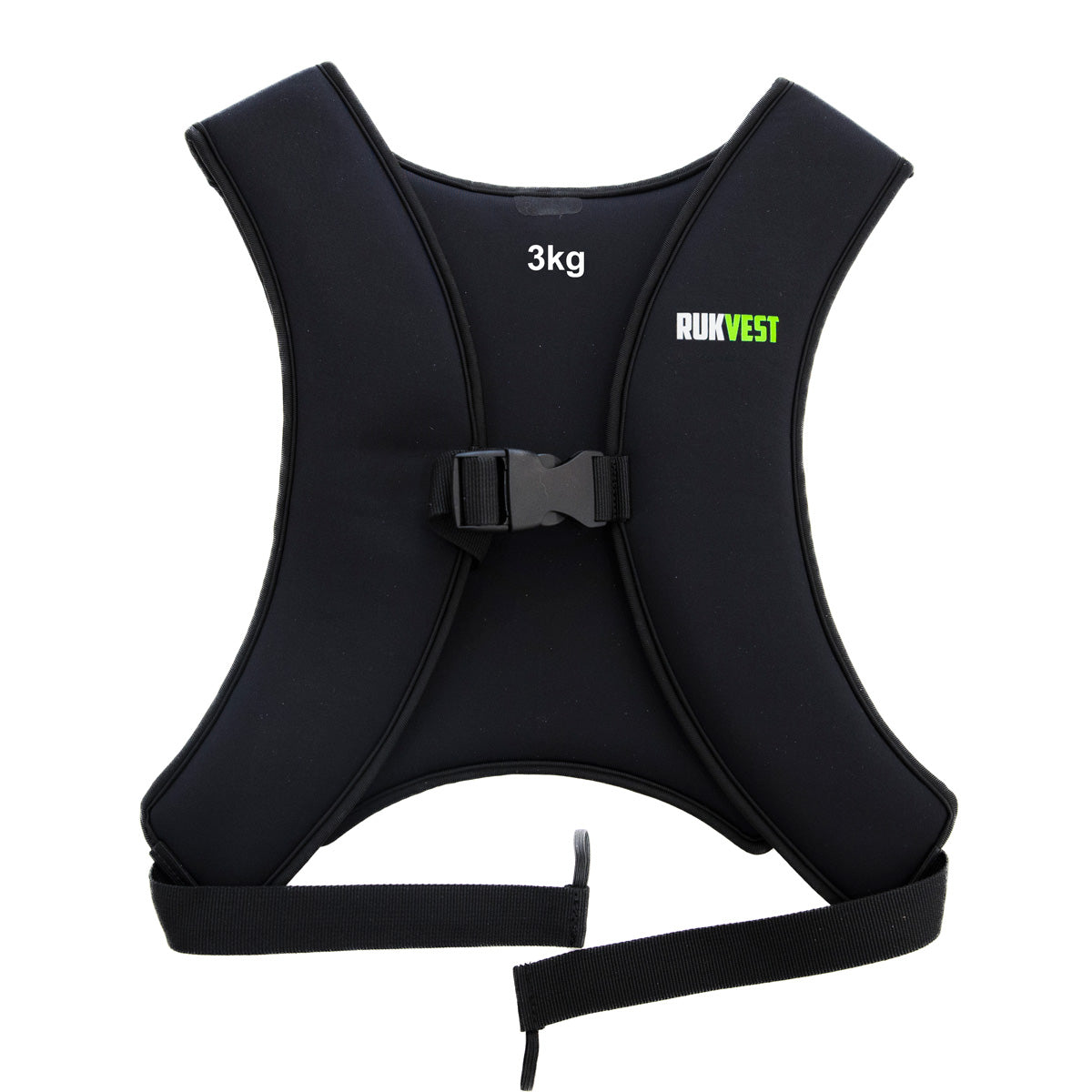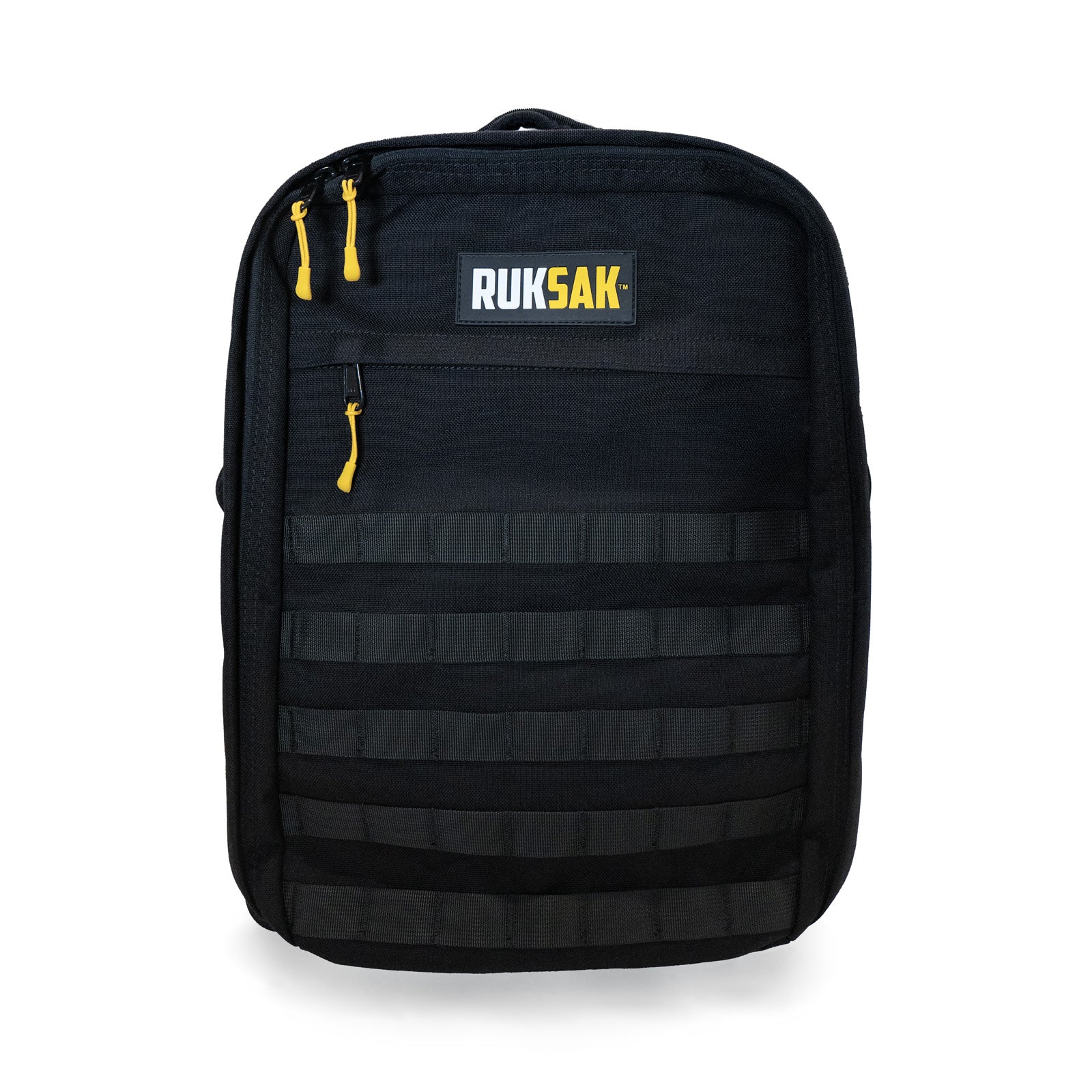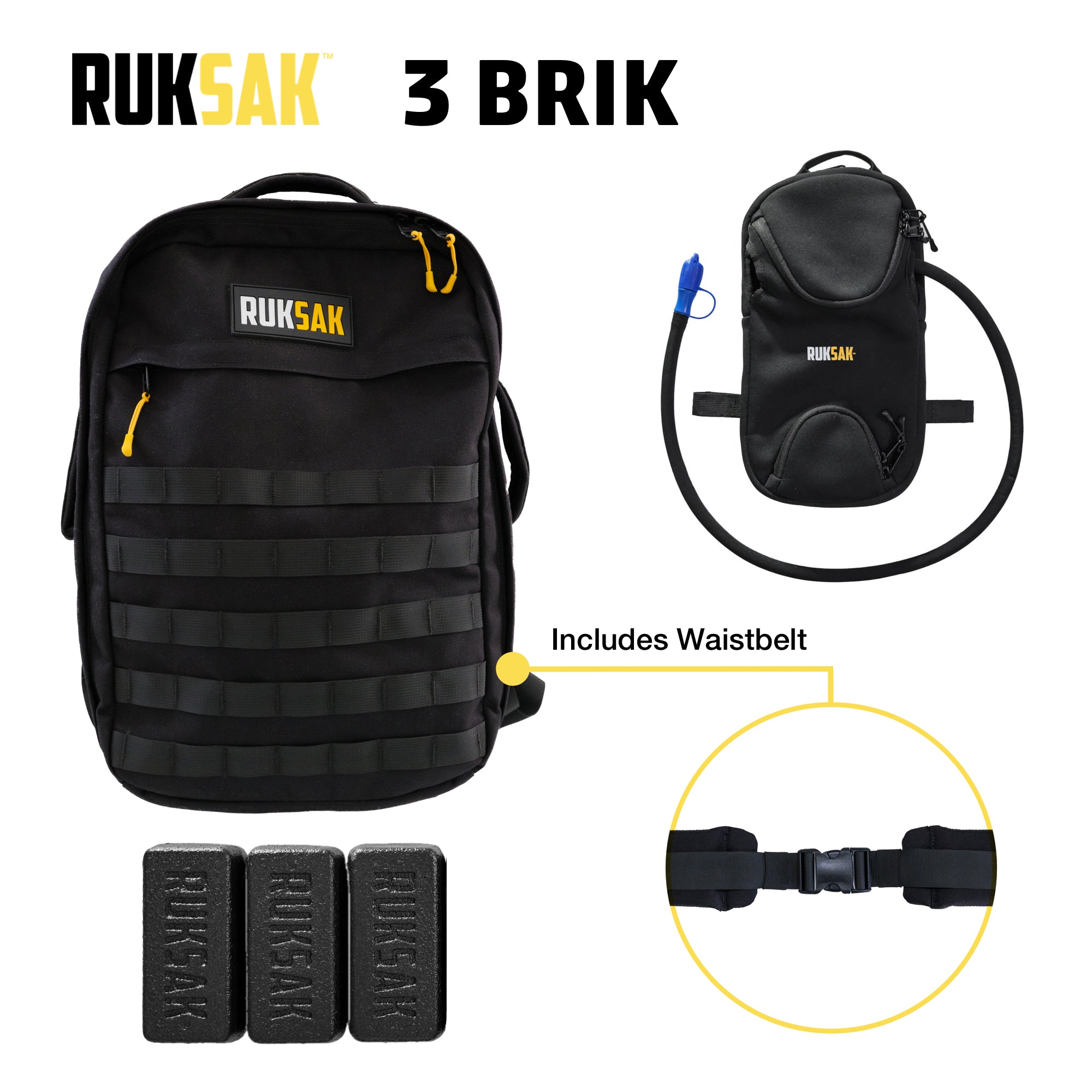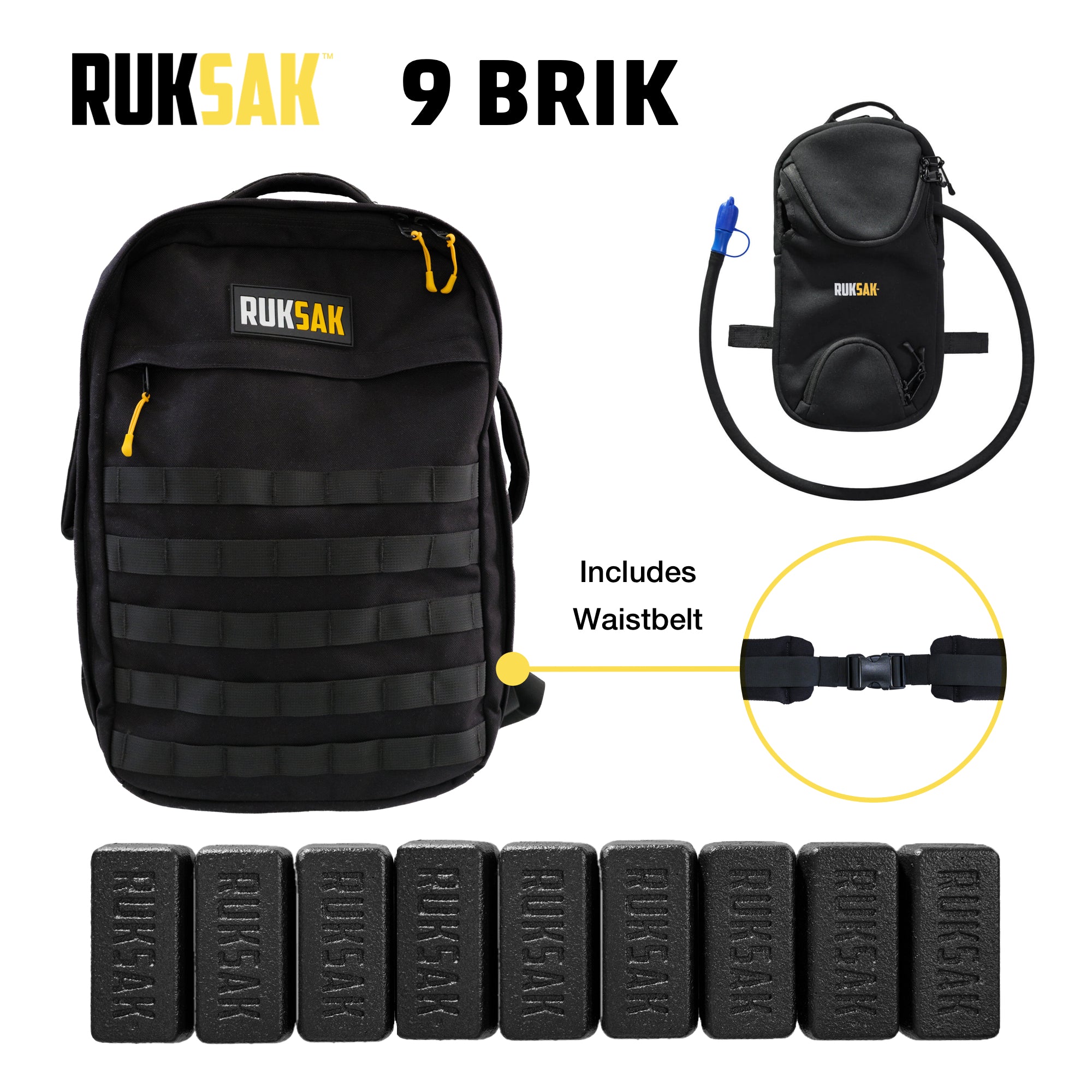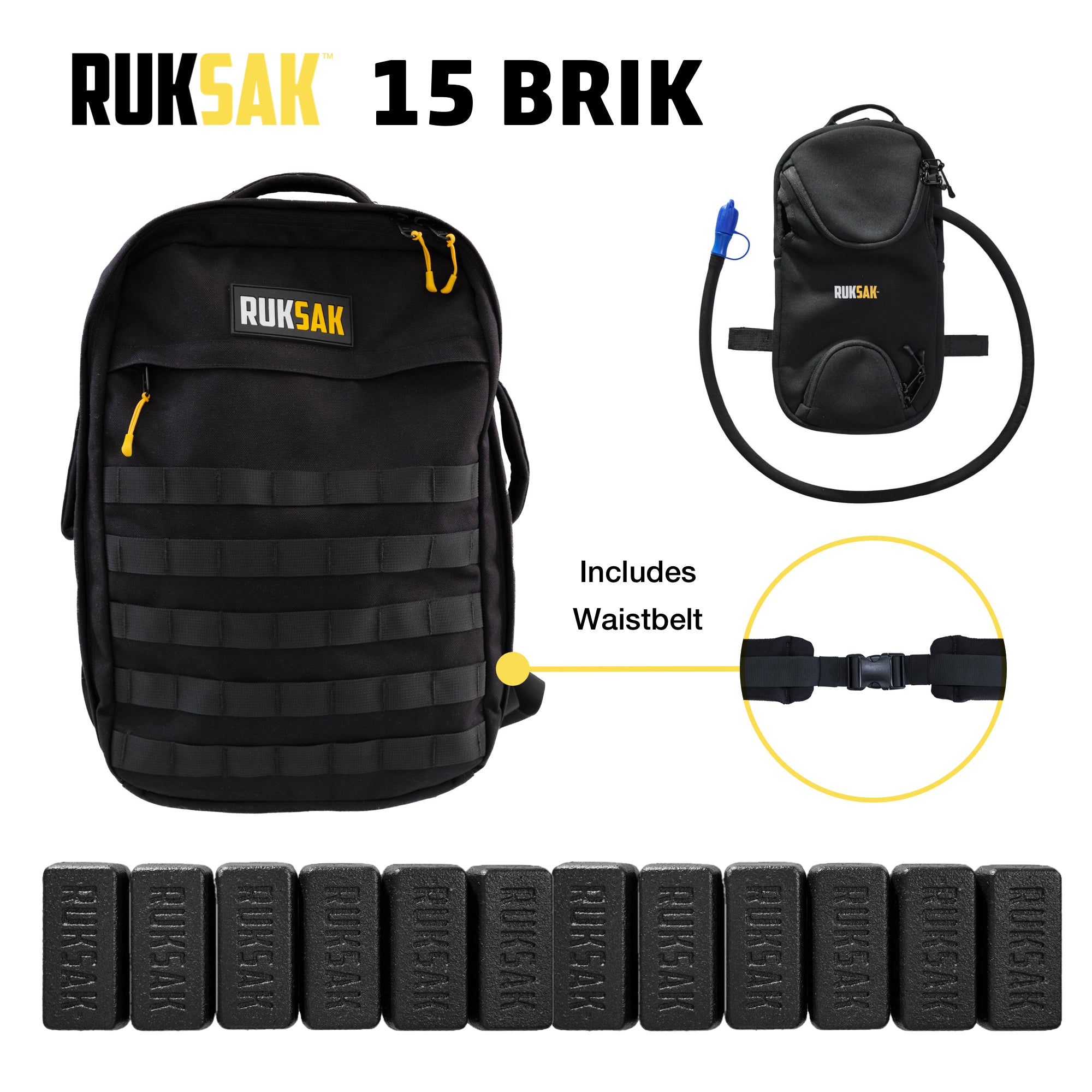
Boost Your Recovery with RUKSAK
Active recovery is key to maintaining progress and preventing injury between gym sessions. While traditional rest days are important, incorporating light resistance through weighted vests or backpacks can take your recovery to the next level. These versatile tools allow you to stay active, improve circulation, and aid muscle repair without overloading your body. By adding controlled resistance to low-impact activities like walking, stretching, or mobility exercises, you can enhance recovery, maintain strength, and prepare your muscles for the next workout – all while promoting better posture, balance, and flexibility. Discover how weighted vests and backpacks can revolutionize your rest days.
Why is active recovery important?
Blood Flow and Circulation
Active recovery delivers more oxygen and nutrients to tired muscles and helps clear out waste products like lactic acid, reducing muscle soreness and speeding up the recovery process.
Reduces Muscle Soreness
By staying lightly active, muscles can gradually relax and stretch, which alleviates tension and helps reduce Delayed Onset Muscle Soreness (DOMS). Active recovery keeps muscles warm and flexible, minimizing stiffness after intense training.
Prevents Injury
Active recovery helps maintain joint mobility and flexibility, reducing the risk of injury during future workouts. Regular movement keeps muscles and connective tissues supple, decreasing the likelihood of strains, sprains, or other overuse injuries.
Maintains Fitness Levels
While passive rest is important, active recovery keeps your cardiovascular system engaged and maintains muscle tone without overloading your body. This helps prevent a decline in fitness while giving your muscles the break they need to repair and grow.
Promotes Mental Recovery
Gentle movement helps reduce stress and improve mood by releasing endorphins. Active recovery can provide a mental break from intense training, promoting relaxation and reducing workout fatigue or burnout.
Flexibility and Mobility
Active recovery often includes stretching and mobility exercises, which improve range of motion. Regular movement ensures that muscles remain flexible, which can enhance performance during subsequent workouts and decrease the risk of injur
Muscle Repair and Growth
Light physical activity stimulates blood flow to the muscles, which delivers the nutrients needed for repair and rebuilding. This helps your muscles recover more effectively, leading to better gains in strength and endurance over time.
Maintain Routine and Habit
Active recovery allows you to stay consistent with your fitness routine without pushing your body to the point of overtraining. It keeps you in the habit of regular movement while giving your muscles the time they need to heal.
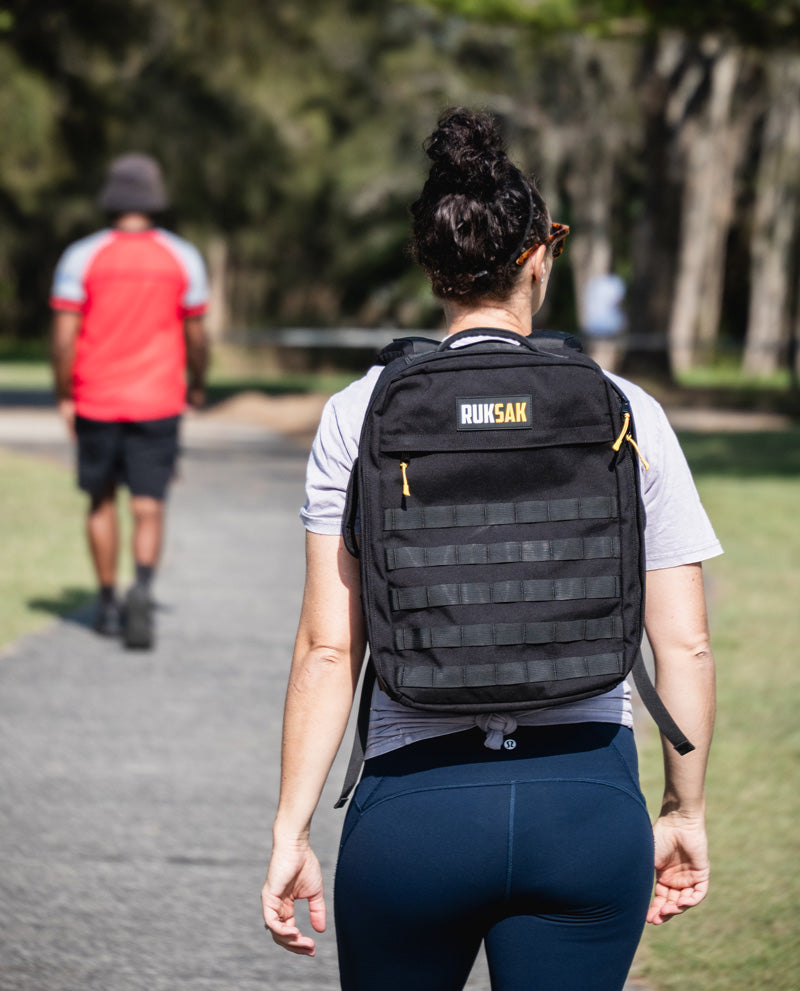
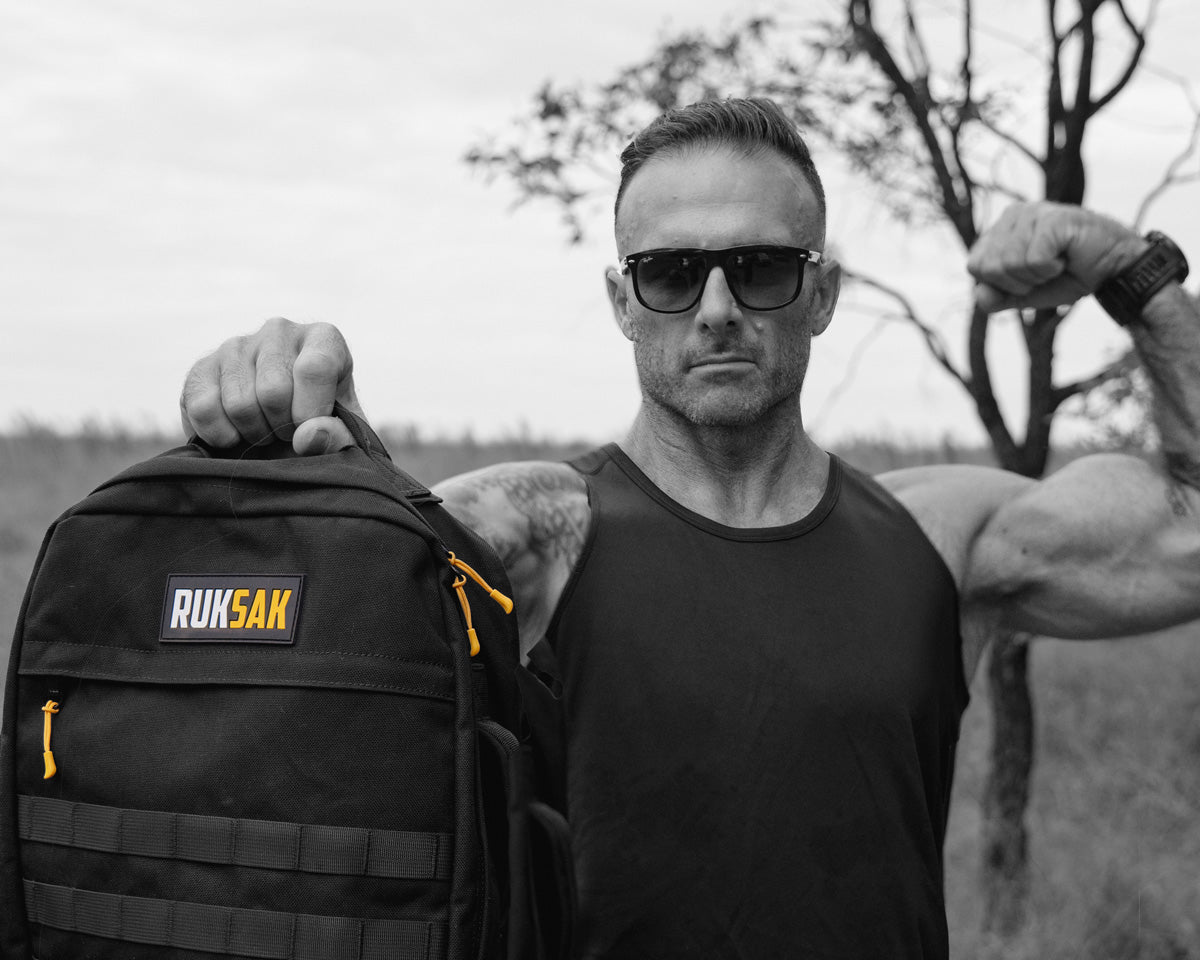
Why the experts love rucking for recovery
Active recovery, particularly through activities like rucking, has gained attention from experts such as Dr. Andrew Huberman and Peter Attia, who emphasise its benefits for physical and mental health. Both advocate for incorporating rucking into routines as a way to enhance cardiovascular fitness while minimising the risk of injury. Dr. Huberman highlights how the rhythmic nature of walking with a weighted backpack can stimulate the body’s recovery processes, improve endurance, and boost mood through the release of endorphins. Similarly, Peter Attia emphasizes the importance of low-impact, weight-bearing exercises like rucking for maintaining muscle mass and promoting longevity. By integrating rucking into their active recovery strategies, both experts showcase its effectiveness in supporting overall health and well-being.
FAQs
What is Active Recovery?
Active recovery refers to engaging in light, low-intensity physical activity on rest days or after intense workouts to help the body recover. Instead of complete rest, active recovery involves gentle movements like walking, stretching, yoga, or low-resistance activities (like rucking) that keep the blood flowing, promote muscle repair, and reduce soreness without putting too much stress on the body.
The idea is to help the muscles recover faster by staying lightly active, improving circulation, and flushing out waste products like lactic acid that build up during strenuous exercise. It's a great way to aid recovery while maintaining mobility and flexibility.
Why is active recovery important?
Active recovery is crucial for enhancing recovery between workouts by improving blood flow and circulation, which helps reduce muscle soreness and flush out waste products. It maintains joint mobility and flexibility, preventing injuries while keeping your cardiovascular system engaged. Additionally, active recovery supports muscle repair and growth, promotes mental well-being, and helps maintain fitness levels without overloading the body. Overall, it balances movement and rest, ensuring your body is prepared for the next training session.
What is rucking, and how does it aid in active recovery?
Rucking involves walking or hiking with a weighted backpack (or "ruck"). As a form of low-impact exercise, it helps increase your heart rate, improve circulation, and engage your muscles without placing excessive strain on your joints. This makes it an ideal activity for active recovery, allowing you to stay active while giving your body the chance to repair and rebuild between more intense workouts.
How much weight should I carry for rucking on recovery days?
For active recovery, it’s best to start light. Aim for about 10-20% of your body weight in the backpack, depending on your fitness level. The goal is to get your muscles working gently, not to overexert yourself. You can always increase the weight as your strength and endurance improve, but on recovery days, keeping it light helps promote healing.
Can rucking reduce muscle soreness after workouts?
Yes, rucking can help reduce Delayed Onset Muscle Soreness (DOMS) by promoting better blood flow to your muscles, which helps flush out lactic acid and other waste products. The light resistance also helps to loosen up tight muscles, making it an effective way to alleviate stiffness and soreness after intense gym days.
Is rucking good for maintaining fitness on rest days?
Absolutely! Rucking keeps you moving on rest days without the intensity of traditional workouts. It helps maintain cardiovascular health, builds endurance, and engages key muscle groups (especially the core, legs, and back) while giving your body the time it needs to recover from heavier lifting or high-impact exercise.
How often should I ruck for active recovery?
You can incorporate rucking into your routine 1-2 times per week on rest days. The duration and weight should match your recovery needs, with shorter, lighter sessions being ideal for active recovery. Start with a 20-30 minute ruck, and gradually increase as your body adapts.
Does rucking improve posture and stability?
Yes, rucking strengthens your core muscles and forces you to maintain good posture while walking. The extra weight in the backpack helps improve balance and stability, supporting overall functional strength, which can help prevent injuries in the gym and enhance your overall fitness.
Can I combine rucking with other active recovery activities?
Absolutely! Rucking can be combined with stretching, light yoga, or bodyweight exercises to create a balanced active recovery day. These activities complement each other by engaging your muscles without overstressing them, keeping you mobile and flexible between intense workouts.
What are the mental benefits of rucking on recovery days?
Rucking is not only great for physical recovery but also has mental health benefits. The rhythmic nature of walking, especially in nature, can help clear your mind, reduce stress, and improve your mood. It’s a simple way to stay active, boost endorphins, and enjoy time outdoors while giving your body time to rest.





